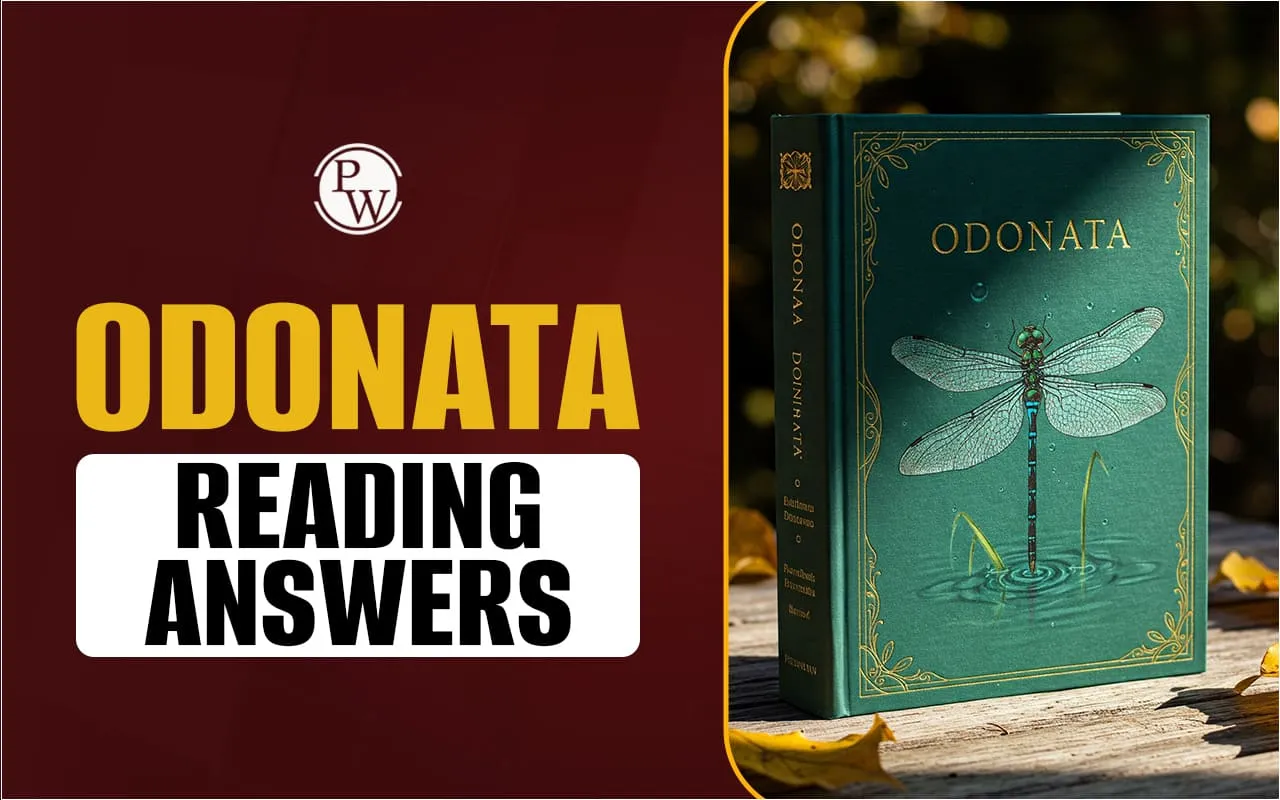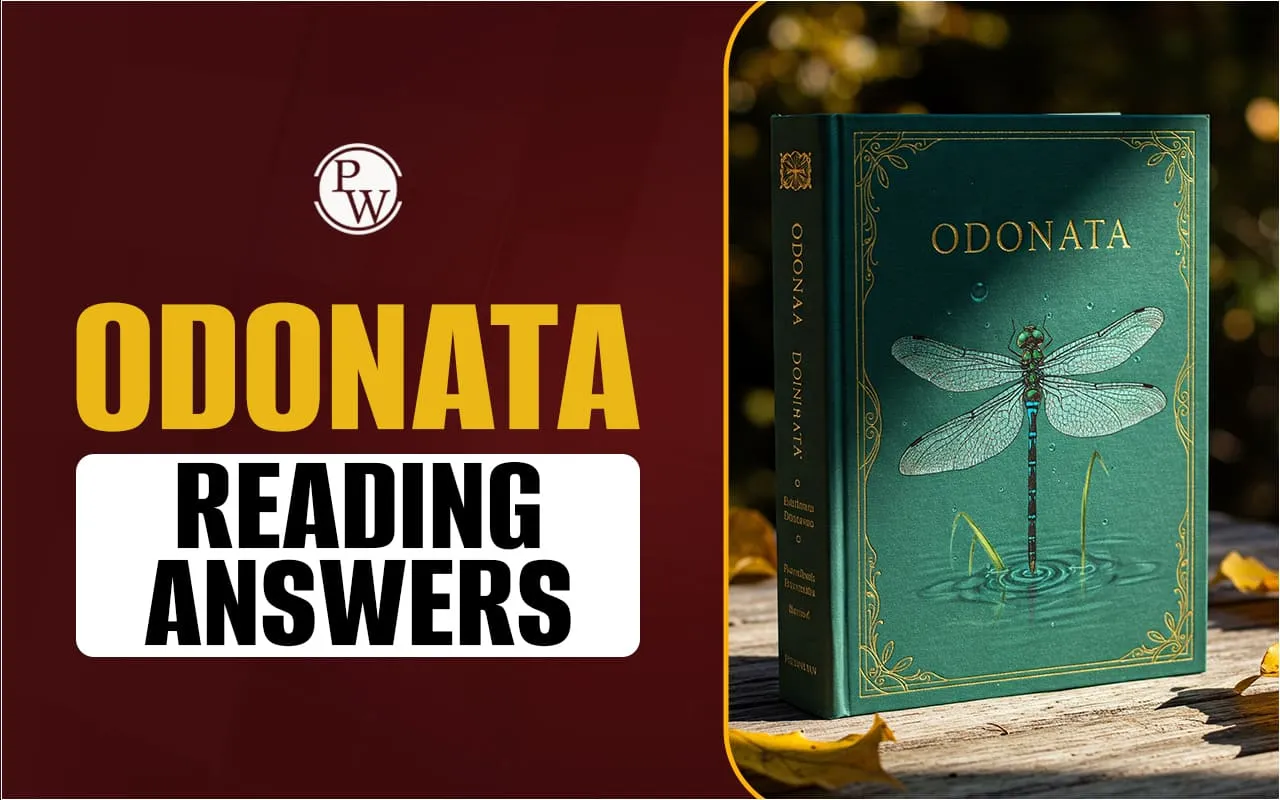

Odonata Reading Answers: The IELTS Reading passage “Odonata” is a commonly featured academic topic that tests students on their reading comprehension, vocabulary, and reasoning skills. This passage often includes questions such as Matching Headings, Sentence Completion, and Short Answer types. Practising with the IELTS Reading Test passage “Odonata” reading test helps candidates understand typical IELTS question formats and sharpen their ability to locate specific information efficiently.
Free IELTS Reading Practice Tests
Odonata IELTS Reading Passage
You should spend about 20 minutes on Questions 1-13.
Odonata
-
The order Odonata, comprising dragonflies and damselflies, has long fascinated scientists and naturalists. These insects are considered among the most ancient winged insects, having existed for more than 300 million years. Fossils of their ancestors, some with wingspans over 70 centimetres, suggest that prehistoric Odonata were far larger than their modern descendants. Their distinctive wing structure and flight mechanisms offer critical insight into the evolution of insect flight.
-
Dragonflies and damselflies exhibit unique flying abilities. Unlike most insects, they can move their forewings and hindwings independently. This capability allows them to hover, glide, and even fly backward. Biomechanical research has shown that this wing control gives Odonata exceptional aerial agility, making them some of the most capable fliers in the insect world.
-
Another intriguing feature of Odonata is their vision. Their large, compound eyes cover most of their heads and offer nearly 360-degree vision. This provides a significant evolutionary advantage in hunting, as dragonflies are known for their precision in catching prey mid-flight. The visual system of Odonata has been studied extensively to understand how their neural processing contributes to rapid response and target tracking.
-
The life cycle of Odonata is also of ecological interest. They begin life as aquatic nymphs, living underwater for several months or even years, depending on the species. These nymphs are carnivorous and use an extendable jaw to catch prey. After completing several moults, they emerge from the water, undergo metamorphosis, and become winged adults. This dual aquatic-terrestrial life cycle makes them sensitive indicators of ecosystem health, particularly freshwater quality.
-
Odonata also play a significant role in ecological balance. Both as nymphs and adults, they help control populations of pest insects such as mosquitoes. Their presence in large numbers is often a sign of a thriving and clean environment. Due to this, they are often monitored by ecologists assessing wetland and waterbody conditions.
-
Over recent decades, however, some species of Odonata have shown declining populations. The destruction of natural habitats, pollution of freshwater sources, and climate change are among the key threats. Conservationists have called for urgent measures to protect both the insects and their habitats, stressing that their decline may be a warning sign of broader environmental degradation.
-
Odonata also serve a cultural function in many societies. In Japan, for instance, dragonflies are symbols of strength and courage. Indigenous tribes in the Americas have included them in folklore, often associating them with change and adaptability. Their beauty, agility, and symbolism continue to inspire literature, art, and scientific inquiry alike.
Also Read:
Odonata Reading Answers Sample Questions
Questions 1-7
Choose the most suitable paragraph headings (i–ix) for each paragraph (A–G).
List of Headings:
i. Flight features and wing movement
ii. Their aquatic and terrestrial life stages
iii. Fossil discoveries and ancient history
iv. Decline and conservation concerns
v. Symbolism and influence in human culture
vi. Exceptional hunting vision
vii. The role of Odonata in ecology
viii. Study of flight mechanisms
ix. Threats to freshwater biodiversity
Paragraph A – ____
Paragraph B – ____
Paragraph C – ____
Paragraph D – ____
Paragraph E – ____
Paragraph F – ____
Paragraph G – ____
Questions 8-13
Complete the sentences below using NO MORE THAN TWO WORDS from the passage.
-
Odonata have existed for over __________ years.
-
These insects can fly backwards because they move their wings __________.
-
Their nearly 360-degree vision helps them catch __________.
-
Odonata nymphs live in __________ habitats before becoming adults.
-
The number of dragonflies is decreasing due to __________ and pollution.
-
In Japanese culture, dragonflies are linked to __________.
| Section wise IELTS Band Score Links | |
|---|---|
| IELTS Reading Band Score | IELTS Listening Band Score |
| IELTS Speaking Band Score | IELTS Writing Band Score |
Odonata Reading Answers with Explanations
1. Paragraph A – iii (Fossil discoveries and ancient history)
Location: "These insects are considered among the most ancient winged insects… fossils… wingspans over 70 centimetres…"
Explanation: This paragraph covers the age and fossil history of Odonata.
2. Paragraph B – i (Flight features and wing movement)
Location: "They can move their forewings and hindwings independently… fly backward…"
Explanation: Focuses on the flying mechanism and features that distinguish their movement.
3. Paragraph C – vi (Exceptional hunting vision)
Location: "Their large, compound eyes… nearly 360-degree vision… precision in catching prey mid-flight."
Explanation: This paragraph explains how their vision aids in hunting.
4. Paragraph D – ii (Their aquatic and terrestrial life stages)
Location: "They begin life as aquatic nymphs… emerge from the water… become winged adults."
Explanation: Describes their life cycle from water to air.
5. Paragraph E – vii (The role of Odonata in ecology)
Location: "They help control populations of pest insects… sign of a thriving… environment."
Explanation: Discusses their ecological role in maintaining balance.
6. Paragraph F – iv (Decline and conservation concerns)
Location: "Some species… declining populations… destruction of natural habitats, pollution…"
Explanation: Details the threats and the need for conservation.
7. Paragraph G – v (Symbolism and influence in human culture)
Location: "In Japan… dragonflies are symbols… Indigenous tribes… folklore…"
Explanation: Talks about the cultural significance and symbolism of Odonata.
8. Edmond Halley observed a Mercury transit in 1677 from St Helena.
Location: N/A for Odonata passage.
9. Odonata have existed for over 300 million years.
Location: "…have existed for more than 300 million years…"
Explanation: The passage clearly states the age of Odonata.
10. These insects can fly backwards because they move their wings independently.
Location: "…they can move their forewings and hindwings independently."
Explanation: Independent wing movement allows for backward flight.
11. Their nearly 360-degree vision helps them catch prey.
Location: "…offer nearly 360-degree vision… precision in catching prey…"
Explanation: Their vision aids in hunting insects.
12. Odonata nymphs live in aquatic habitats before becoming adults.
Location: "They begin life as aquatic nymphs…"
Explanation: Refers to their underwater juvenile stage.
13. The number of dragonflies is decreasing due to habitat loss and pollution.
Location: "…shown declining populations… destruction of natural habitats, pollution…"
Explanation: Habitat destruction and pollution are identified causes.
14. In Japanese culture, dragonflies are linked to strength.
Location: "In Japan… dragonflies are symbols of strength and courage."
Explanation: Cultural symbolism of dragonflies in Japan.
Tips for Solving the Odonata Reading Passage
Here are some useful strategies to answer questions effectively:
-
Skim for main ideas: Focus on topic sentences and headings to locate information quickly.
-
Highlight keywords: Underline names, dates, and scientific terms for faster reference.
-
Identify question types: Know how to approach True/False/Not Given, sentence completions, and matching information.
-
Look for synonyms: The passage may paraphrase the question language.
-
Practice timing: Train yourself to complete similar passages within 20 minutes to simulate real exam conditions.
Guidance to PW
The IELTS Online Courses is a great initiative taken by Physics Wallah to help IELTS aspirants better prepare for the exam. Follow our below pages to learn more about the IELTS exam.| What is IELTS Exam? | Documents Required for IELTS Registration |
| IELTS exam eligibility requirements | IELTS Exam Fees |
| IELTS test results | IELTS Exam Pattern |
Odonata Reading Answers FAQs
What is Odonata in the IELTS Reading passage?
Why are dragonflies considered good fliers?
How do Odonata contribute to the environment?
What causes the decline of dragonfly populations?
How are dragonflies viewed in different cultures?












